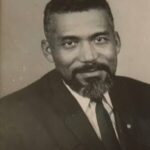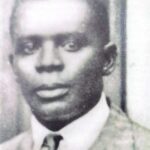PRETORIUS, MARTHINUS WESSEL
- 4 Min Read
Marthinus Wessel Pretorius born in the Graaf-Reinet District (September 17, 1819-May 19, 1901), was president of the South African Republic (Transvaal) and the Orange Free State.

PHOTO CAPTION: Pretorius Marthinus Wessel. SOURCE: EA Library.
Pretorius was the eldest child of the prominent Voortrekker leader Andries Wilhelmus Jacobus Pretorius and his first wife Christina Petronella de Wit. The rugged conditions under which he grew up limited his education to elementary schooling.
On October 31, 1838, the Pretorius family, with a party consisting of 68 wagons, left the Cape Colony to settle in Natal. During the trek, the young Pretorius was a member of the commando which finally inflicted a crushing defeat on the Zulu at the Battle of Blood River on December 16, 1838. On December 19, 1841, he married a young widow, Aletta Magdalena Smit, and settled on a farm close to Pietermaritzburg. Several children were born of the marriage, but only one daughter survived.
When the independent Voortrekker republic, Natal, was annexed by Great Britain in 1842, the Pretorius family did not join the exodus of Trekkers to the Transvaal but decided to remain in Natal under British rule. The Pretorius family remained there through late 1847, at which time relations between them and the British administration became untenable. Marthinus Pretorius led his family out of Natal, and the family was reunited with the older Pretorius at the Tugela River. The family continued its trek, finally settling on a farm near Magaliesberg.
In the Transvaal, the elder Pretorius as commandant-general once again played a prominent role in the Trekkers’ affairs. When he died in 1853, he was succeeded by his son, who shared his father’s ideal of uniting all the Trekkers into one republic. In the first years of his leadership, Pretorius sought amalgamation of the two Boer republics, resisted the incorporating of the Transvaal church within the Cape synod, and oversaw the adoption of a draft constitution which led to his election as provisional state president in November 1855.
During the same session, the Volksraad founded Pretoria which later became the capital of the Republic. The period 1856-60 found Pretorius in a struggle to unite the various factions and regional interests within the republic, particularly that of Lydenburg which had been alienated over the Cape synod controversy. Only in 1860 was unity achieved, and the first truly representative Volksraad met in Pretoria in April of that year.
Meanwhile, in 1859, Pretorius had been elected state president of the Orange Free State. In this way, the two republics were united in his person. The dual presidency was, however, not acceptable to the Transvaalers, who gave him an honourable discharge. He remained president of the Orange Free State until 1863, where he was successful in improving relations with several African leaders, particularly the Basotho chief, Moshoeshoe. He also introduced financial reforms which were beneficial to the country and raised the standard of education.
Pretorius’s departure from the Transvaal gave rise to dissension and civil strife. Peace was only restored when he returned and was re-elected as president in 1864. He attempted to improve the dismal financial condition of the country and initiated a project to build a railway to the Portuguese harbour of Delagoa Bay (Maputo). He achieved considerable success in settling various pressing boundary problems.
In 1870 the Transvaal had become involved in a heated controversy with Great Britain regarding the possession of the diamond fields which were located between the Vaal and Harts Rivers. Without proper consultation with his government, Pretorius agreed to submit the whole question to arbitration. When the decision was given against the Transvaal, Pretorius felt compelled to resign as president because of his inept handling of his country’s case.
He temporarily withdrew from public life, but again came to the aid of the Transvaalers when they resisted the British annexation of the republic in 1877. He was subsequently imprisoned by the British authorities on a charge of high treason, only to be promptly released on bail. The Transvaalers continued to defy the British authorities and placed the government in the hands of a triumvirate consisting of Pretorius, P.J. Joubert and Paul Kruger.
When the Transvaal eventually regained its independence with the war of 1881, he once again retired from public life. He died and was buried at Potchefstroom on May 19, 1901. Marthinus Pretorius is understood, in retrospect, to have been a true patriot and a builder of national unity during a tire of external pressure.
He was not a particularly well-educated or intelligent man, and the attempted transition from Trek leader to statesman was ultimately beyond his abilities. Still, he is celebrated as a leading historical figure among the volk.
M.S. APPELGRYN




